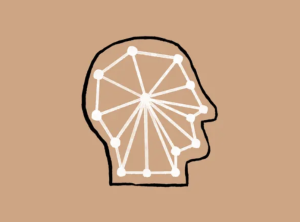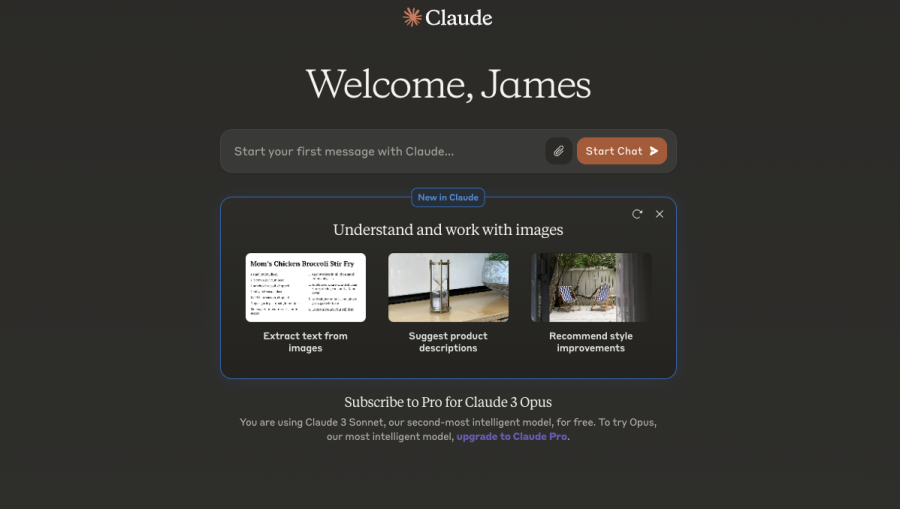AI: What is Claude AI and is it free to use?

The peak of the AI chatbot boom may have passed, but now there exists a variety of competitive generative AI chatbots.
OpenAI’s ChatGPT was the first to captivate the world with its impressive, human-like chatbot that was able to both tell jokes and explain detailed and complicated scientific research. All from simple human-written text prompts. It was a revelation and sparked an intense AI arms race as the world’s biggest companies sought to grab a piece of the pie, as well as new companies popping up with their own AI products.
Google and Microsoft are just two examples of huge tech companies entering the AI space over the last few years.
One of ChatGPT’s big rivals in the generative chatbot industry is Claude AI, which was launched in 2023.
Who owns Claude AI?Claude AI is owned by California-based AI startup Anthropoic and was founded in 2021 by former senior members of OpenAI, Daniella and Dario Amodei. Dario was previously OpenAI’s Vice President of Research. They were among several OpenAI employees who left the business in 2019 over direction businesses, including the company’s work alongside Microsoft.
Within a few years, the company had raised $700 million in funding and towards the end of 2023, Amazon was announced as a minority stakeholder after investing up to $4 billion. Since then, Google has also invested $400 million in Anthropic.
The business, which now has more than 150 employees, has created a family of large language models (LLM) called Claude.
Anthropic’s USP is what they call ‘Constitutional AI’, which is an approach developed for training LLMs to be as ethical as possible. The chatbot is trained on the principles taken from the likes of the 1948 Universal Declaration of Human Rights so that it can behave in a safe, accurate and secure way.
Anthropic launched the first iteration of Claude in March 2023, and followed that up with Claude 2 in July 2023. Claude 2 stood out in the marketplace because of the ability to upload PDFs and other documents for summary and analysis purposes.
In March 2024, Anthropic launched Claude 3, which the business claimed set new industry benchmarks across a wide range of cognitive tasks. Claude 3 is a family – Haiku, Sonnet and Opus – of models that have differing levels of capabilities, knowledge levels and sophistication.
Anthropic is now valued at around $20 billion and is a public benefits corporation, which is a business that intends to make a profit but in a way that benefits the public and its users.
What is Claude AI?In its most basic form, Claude AI is Anthropic’s very own version of ChatGPT. Similar to ChatGPT 3.5, its dataset has a cut-off point – 2022 – and it can’t connect to the internet, so it has limitations to how accurate it can be when responding to prompts related to events that have happened after 2022.
The chatbot is trained to have natural, human-like text-based conversations and is best used for summarization, Q&A, decision-making, code writing and summarization.
Claude is also the name of the underlying LLM that powers the Claude models. Alongside Claude, there is also Claude Instant, which is a lighter and faster iteration of Claude, and Claude 3, which is the latest addition to the family.
Several features make Claude stand out from its competitors. It excels at conversational fluency and it can hold its own when involved in engaging conversations and it prides itself on factual accuracy and transparency.
It’s also very fast. For example, I uploaded a copy of my CV and asked Claude to summarize it for me. It took less than a few seconds to return seven bullet points about my CV, including a career timeline and an overall summary of my expertise and experience.
Claude currently has a context window of 200,000 tokens, which means it can handle text inputs of around 150,000 words or 500 pages of written material. This makes it far less likely for users to experience hallucinations – which is when a chatbot responds with something that isn’t factually correct – and allows businesses to use the chatbot to analyze and summarise large documents quickly and accurately.
How to use Claude AI: step by step
Using Claude AI is simple. Simply go to claude.ai and sign up using an email address. From there, you will be prompted to give your name and acknowledge Anthropic’s Acceptable Use Policy and the fact that Claude isn’t perfect and may generate incorrect or misleading information. Standard stuff.
Once the formalities are out of the way, you’re taken to Claude’s landing page. The model you’re automatically given access to is Claude 3 Sonnet, which is Anthropic’s second-most intelligent Claude model.
Enter promptsSonnet can understand and work with images, as well as text and documents, so you can upload an image for Claude to extract text from, convert UI design to front-end code, ask Claude to recommend style improvements to a photo of a particular setting or generate a recipe from a photo of a plate of food – perfect for interior designers, coders and budding chefs for example.
To start engaging with Claude 3 Sonnet, you simply have to either enter a prompt in the text box or upload a file and give it some instructions on what you want the model to do with it. Claude can read PDFs, Word docs and more.
Be clear and specificTo get the best results when using Claude AI, it’s advised to ask clear and specific questions. The more detailed your query, the better response you will likely get in return. Additionally, always try to provide context where possible, which allows Claude to understand relevant details.
And it’s also good to follow up on your initial queries for further clarification. Claude will always seek to explain topics in more detail when prompted. You can also ask Claude if it needs any more information or has any questions for you before it undertakes your request.
PracticeBeyond that, it’s worth just testing Claude and seeing where its limitations are and how it can be useful for your own purposes. Try uploading documents and having general conversations with it to get a feel for its capabilities. This will allow you to know how best to utilise Claude AI in your everyday tasks, either for work or personal uses.
Is Claude AI free to use?Claude AI is free with limitations, which is currently around 30 messages a day. All you need is an email address to gain access to the free version.
To upgrade for access to Anthropic’s faster and more intelligent Claude AI models, it costs $20-a-month, billed annually.
Claude Pro gives you a lot more functionality, including having a fully customizable persona and integrating Claude into third-party apps, such as Slack, 5x more messaging than the free plan and early access to new features.
Featured Image: Anthropic
The post AI: What is Claude AI and is it free to use? appeared first on ReadWrite.
